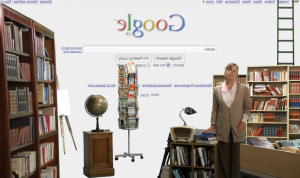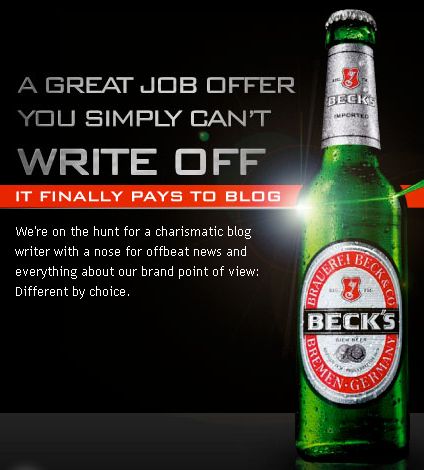von Roland Hachmann | Jan. 13, 2010 | Blog, Digital Marketing, Marketing, Social Media Marketing
There has been a lot of talk about the end or decline of the destination sites. Mainly about the big portals as well as brands sites – the decline in daily visitors happens at the same time as visitors to social media sites are steadily increasing. Here is a blogpost that nicely visualizes this effect for a few famous brands and social media sites.
Coca-Cola and Unilever now announced that they’ll start shifting their online campaign activities from dedicated microsites to sites, profiles or channels on social media sites. Makes sense, considering the users are already there and they can tap into a ready community:
The FMCG giants are moving away from sites created on a campaign-by-campaign basis in favour of investment in existing communities.
Coca-Cola: “We would like to place our activities and brands where people are, rather than dragging them to our platform,”
Unilever: “You’ll see fewer brands creating a site for one campaign and then throwing it away. Certainly we won’t do that at Unilever any more. It’s natural online to go to the place where people are already consuming media,” she added. “It’s less effort to ask people to leave an environment they’re already in.”
They won’t do that for all campaigns, and certainly not immediately, but given the current change in the media landscape it does make a whole lot of sense for some brands to move closer to where their customer are.
von Roland Hachmann | Nov. 21, 2009 | Blog, Digital Marketing, Online Advertising, SEO / SEA
Coming up for an original idea for a rather ordinary product like the cereal wheetabix isn’t always easy.
In this case, it’s a play on the fact that wheetabix as a breakfast gives you energy for the whole day. So they came up with a questions that is interesting for all of us: „What makes the worlds largest search engine work?“

The answer: a library lady who assembles all the information within 0.12 seconds (or so), you can take a peak behind the Google screen over here.
When you’re not typing search queries yourself, it seems like you can see queries of other people as live search. But somehow I don’t believe that…
von Roland Hachmann | Juli 4, 2008 | Blog, Digital Culture, Digital Marketing, Marketing, Social Media Marketing
In discussions and social media workshops with clients there is always the one question looming: shall we hop on to existing networks or shall we build our own, new social network? A brand centric or at rather: brand-fan centric social network. Of course it’ll have all the feats like uploading content, connecting with other brand-fans, sharing, communicating, etc. Why not, there seem to be a lot of brand-fans out there!
This can be a good idea depending on your objectives. But on the other hand, there are quite a few reasons, why you might want to leverage existing networks. Be it social network platforms like facebook and myspace, content networks like youtube and flickr or loose networks like blogs.
It has got to do something with the old questions:
- what’s the use of being the first in a new network (the first fax machine ever wasn’t really useful, was it?)
- how sticky are the networks, that users have already established elsewhere? Will they go through the effort of establishing yet another network?
The reason I started thinking about this is the current post about identi.ca vs twitter on techcrunch. Twitter is the most popular mobile microblogging service out there, no doubt about it. But the fact, that it has experienced a lot of downtime lately (and „failwhale“ becoming regular geek speak) has put off many people lately.
identi.ca offers a rationally better solution to this problem (even though it wouldn’t have had enough traffic yet to prove it). Its openness let’s you assume, that in the long term, it will be the more reliable service. But still, people seem to be reluctant to move over there. That’s what techcrunch is writing about: the problem with identi.ca is, that it is not twitter.
Twitter is not huge yet, most people won’t even have heard about it sofar. But its user-base is strong enough for everyone to stick with it, hope that the technical problems will cease to happen once they have gotten their infrastructure right with all the VC capital they got…
So if a well functioning network service can’t lure people from a failing one, how are brands expecting to launch completely new network services out of nothing? Why should people start spending their time on the social network site of „FMCG brand X“ and go through all the effort finding and contacting new or old friends (again)?
There might be some brands/products with such a strong fan base or such a strong communicative idea, that they can start building their fan community on their own networking site. For all others, I would probably recommend leveraging existing networking sites. At least to begin with.
von Roland Hachmann | Mai 20, 2008 | Ad News, Blog, Digital Marketing, Marketing, Social Media Marketing
Just when you thought that everybody who wants to use a (corporate) blog in their communication has tried (and sometimes failed miserably), Becks opens the bottle and starts a blogger casting.

Here is what they want:
You live by the blog. You have a way with words that hold people captive. And you don’t shy away from being in the public eye. Then we want you. Give your two cents worth, and we’ll give you a handsome salary and other bright perks. Your name and blogs will be seen by many around the world. Others have 365 days, you have 365 entries in a year. You get to work with Beck’s and a congenial creative team in Amsterdam, The Netherlands. You might even relocate to a greener pasture. Sounds too good to be true?
Adverblog found a quote from a press release:
„Our consumers actively seek out links to new trends and genuine material from around the globe. They have a desire to learn about people who share the same values as they do. The Beck’s new columnist will help uncover and highlight relevant and exciting topics for our consumers, enabling us to better connect with them.“
The idea is not new, but it could work well for becks, if the blogger manages to connect will with the becks consumer. But there are several possible negative outcomes:
- The blogger will blog too much in favour of becks undertakings: it might not be sufficiently authentic and people might stop reading.
- The blogger will blog very independently and could soon be a ‚celebrity‘, successful even when disconnected from the becks brand. Hence the image transfer to becks might decrease over time.
- The blogging could turn out to be extremely boring regardless of the being authentic or not. Again people might stop reading it.
In either case it is a comparatively small investment (at the cost of probably only a few TV commercials) with a large possible upside to it.
von Roland Hachmann | Dez. 6, 2006 | Ad News, Blog, Digital Marketing, Digital News, Online Advertising
Marketers Websites attract more eyeballs than other media, according to AdAge:
Believe it or not, those boring corporate websites are pulling in more eyeballs — and more influencers — than the flashy prime time TV shows, print magazines and general interest sites on which marketers advertise.
In figures, to be precise:
Yet the websites of P&G and Unilever now reach nearly 6 million and 3 million unique visitors, respectively, in the U.S. each month, according to ComScore Media Metrix.
But it’s not only about more eyeballs, these eyeballs are also quite interesting for marketers, as they are usually influencers, or at least people who actively engage with the brand in considerable numbers.
Their engagement with corporate and brand sites is well above the norm for the general population. „Visitors to [corporate and brand] websites have a much higher propensity to recommend products,“ said Pete Blackshaw, chief marketing officer of Nielsen Buzzmetrics, whose research shows more than 40% of people who give a brand e-mail feedback are likely to recommend it to others.
Much of it is derived from „regular“ online Advertising:
Much of the traffic to the big package-goods marketers‘ sites appears to be coming the way originally envisioned in the online advertising model: as a response to online display advertising. Search-heavy Google accounts for a relatively small amount of traffic to the P&G and Unilever sites compared with display-ad-heavy Yahoo
That doesn’t surprise me at all, since most of P&Gs and Unilevers products are FMCG, for which I assume users usually don’t search much. Or if people do search for these kind of things, then the FMCG companies haven’t found the right way to effectively keyword advertise.



 Wo ich sonst so bin...
Wo ich sonst so bin...